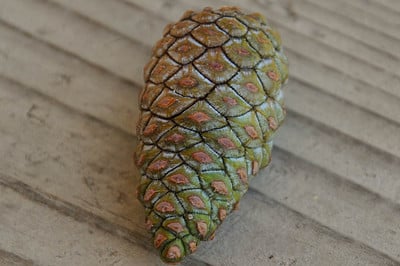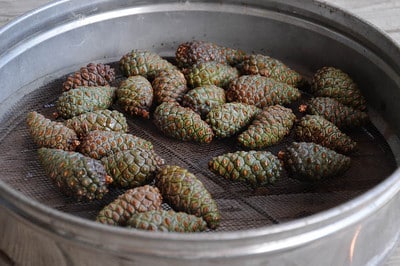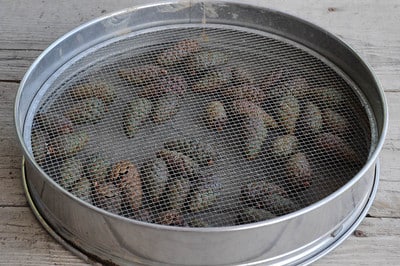[8/16/16 – See the updated and expanded version: How to grow Japanese black pine from seed]
I’ve often heard the lament that there isn’t enough good black pine bonsai available. I can sympathize. Returning from a visit to Japan can forever skew one’s perspective toward very high quality trees – trees that are hard to come by in the US. Short of a move to a country with permissive import laws or a career in smuggling, one of our best options for sourcing black pine bonsai is growing them from scratch.
Growing bonsai from seed is a somewhat selfless act as the next generation will benefit more from our work than we will. That said, growing trees from seed can be a lot of fun. Growing up in a family that maintains a retail nursery has instilled in me an appreciation for the horticultural side of bonsai. And as pine has been a life-long favorite of mine, it’s only been natural to grow them from seed.
I’ll admit – I was very fortunate to start a batch of pine seedlings my first year in bonsai. For that I owe thanks to Boon. And to Bonsai Tonight issues #12 and #20. For anyone considering growing black pine from seed I highly recommend getting your hands on these issues as they’re full of good advice on the topic.
The first step is finding pine cones. Fortunately, Japanese black pines are popular landscape trees. The trick is finding a good specimen. Things to look for: needle quality, bud density, and bark.
After finding a good specimen, stop by in October when the cones mature. I collected the cones below a few weeks ago. Upon returning to the same tree this afternoon, I noticed that almost all of the remaining cones had opened – meaning that I’d be waiting until next year before harvesting more cones.

Pine cones – Japanese black pine
Try for larger cones rather than smaller, and cones from more vigorous branches rather than those from weaker ones. Experience has shown that the more robust the cone, the better the seeds inside.

Typical pine cone
After bringing the cones home, give them a quick bath in a highly diluted lime-sulfur solution to kill any fungus or pests that might be living amongst the cones. Then set the cones out to dry.

Cleaned and ready to dry
Soil sifters, it turns out, make great cone-drying trays. Place the cones in the sifter, then cover them with an additional screen to keep the birds away. Don’t place the cones too close together as they’ll expand when they open up.

Protected from birds
If you haven’t done this before, I recommend collecting more cones than you think are necessary. While some produce a handful of viable seeds, others produce none. I also start many more pines than I want to end up with. Even when growing seedlings from an outstanding source, it’s not certain that all offspring will be as impressive as the parent. Starting a few more than you need is a good way to hedge your bets.
Subscribe to Bonsai Tonight
New Posts Delivered Every Tuesday and Friday
Alex says
Hey Jonas,
I was wondering if by Bonsai Tonight issues #12 and #20 you actually meant bonsai today? I have been looking around Ann Arbor for trees to collect some pine seeds from, but alas I think it is just too cold here for black pine to grow well in the landscape. I guess I will have to hit up my friends from California next time I am back.
Alex
xwires says
Hi Alex – thanks for catching me in quite a slip – yes, it’s in Bonsai Today. I actually highly recommend the first 20-30 issues as they are chock-full of great content. And bummer to hear about the pines. While they grow in a variety of climates across Japan, they are native to locales that are milder than Ann Arbor. And if you’re looking for seeds, send a reminder next fall.